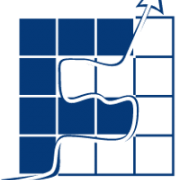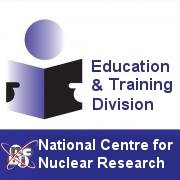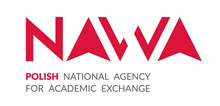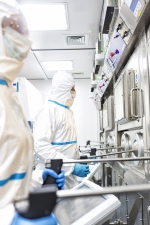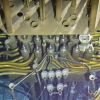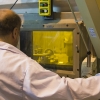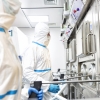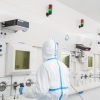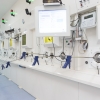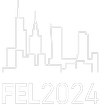Iodine from Świerk for half a million patients a week
2018.04.16 11:00 - Marek PawłowskiA large portion of radioactive iodine-131 used in nuclear medicine all over the world is manufactured in Poland. Radioisotope Centre POLATOM, which operates within National Centre for Nuclear Research, exports iodine reagents and ready-to-use medical products to recipients on six continents. Isotopes needed to produce the radiopharmaceuticals are created in research reactor Maria. Products containing iodine-131 are used mainly in therapy and diagnostic of thyroid conditions.
Hyperthyroidism is a problem for approx. 1% of the population. This condition causes a number of unpleasant ailments, and in some cases can be life-threatening. The disease can be cured with radioisotopes (through application of preparations containing radioactive iodine) as well as pharmacologically and surgically. American Thyroid Association Guidelines from 2016 suggests radiotherapy as the most desirable in 7 out of 15 studied cases of Graves’ disease, which is the cause of 50-80% of hyperthyroidism (in 5 cases it suggests surgical method, in 3 – pharmacological). Radiopharmaceuticals are not recommended only in pregnancy and thyroiditis.
Isotope therapy, as well as earlier diagnostic, uses preparations containing radiactive iodine isotopes – especially iodine-131, with the half-life of 8 days. Iodine is naturally collected in thyroid gland. If the iodine is radioactive, then the beta radiation emitted during the decay destroys a portion of thyroid cells in its vicinity and thus decreases the intensity of hormone production.
Iodine-131 is mainly produced in nuclear reactors. The most common method is based on tellurium irradiation. “Tellurium dioxide is placed in special containers, which are inserted into the reactor’s isotope canals.” – as explained by mgr. inż. Ireneusz Owsianko, head of the research reactor Maria in NCBJ, Świerk. “Neutrons, that come from the fission of nuclear fuel (U-235) in the reactor, are absorbed by tellurium-130 nuclei. The produced tellurium-131 decays in several dozen minutes into iodine-131 through beta decay. The irradiation process takes a few days, although this time is chosen specifically, so that the iodine saturation is optimal. The resulting material is highly radioactive. We unload it in isotope chambers into special containers and, prepared like that, it travels a few hundred meters to our Radioisotope Centre Polatom, where it undergoes further processing.”
RC Polatom coordinates and hosts the whole production process of iodine-131 in NCBJ. It takes care of preparing the material for irradiation, and then separating the radioactive iodine from the material and transforming it into usable forms of chemical reagents and final radiopharmaceuticals, as well as selling it to the recipients all over the world. “We separate the iodine produced inside the reactor from the residual tellurium dioxide in the process of sublimation.” – explains Dariusz Socha, Ph.D, director of RC Polatom. “We convert most of the radioactive iodine-131 into sodium sodium iodide and mainly this form is delivered to the clients. It serves as a precursor for manufacturing of radiopharmaceuticals in the recipients’ countries. We also produce ready-to-use medical products used in both advanced diagnostic and therapy.”
NCBJ is an important global provider of iodine-131 and manufacturer of radiopharmaceuticals containing this isotope. “Our weekly production of iodine-131 provides therapeutic and diagnostic doses to half a million patients” – emphasizes mgr. inż. Krzysztof Bańko, assistant sales director of RC Polatom. “We are the main manufacturer: we provide about as much iodine on the global market as the three other biggest companies combined. We fully satisfy the polish demand for ready iodine preparations, even though shipment to polish market are only a fraction of our production, obviously.” An incredibly important aspect of production and distribution of iodine-131 is the fact, that its half-life is only 8 days. “Short half-life is a good factor for patients, because the sources of destructive radiation inserted into their bodies lose their activity quickly.” – explains director Bańko. “At the same time, it’s a big challenge for manufacturers and physicians, as the radioactive compounds must be served to the patients in a matter of days after their production, and their activity for a given day has to be precisely known. Radiopharmaceuticals are different from other medications, aspirin, for example, in the fact, that they can’t be stored. Our products are constantly being shipped by air to recipients on both hemispheres. The production must be constant; a few weeks of potential downtime means, that a few million patients all over the world won’t get their treatment in time.”
Iodine-131 is not the only radioisotope produced in the Maria reactor. NCBJ is also, among other things, a significant provider of molybdenum isotope used in the production of technetium – the most popular element in nuclear medicine.
Not all medically significant isotopes can be made in the reactor. Some can be created only by irradiating specific materials with charged particle radiation, such as protons, deuterons, or alpha particles. “Last year we begun the implementation of CERAD project, co-financed from the EU funds.” – says prof. Krzysztof Kurek, director of NCBJ. “A new centre for research-and-production of radiopharmaceuticals will be created in Świerk. It will be equipped with cyclotron, allowing us to make the isotopes out of our reach as of today. We will be able to produce, for example iodine -123, the half-life of which is barely half a day and that’s why it is recommended in the treatment of thyroid conditions in kids. Our Radioisotope Centre already produces radiopharmaceuticals containing this isotope, but so far the precursors for its production have to be imported from Germany.”
Healthcare activities are an important field of work in NCBJ. “We are a research institution, so our task is also to develop new radiopharmaceuticals.” – adds prof. Kurek. “We have been doing this for many years and the CERAD laboratories will be an invaluable help to us. Moreover, we and our partners have won a competition for conducting interdisciplinary PhD studies Radiopharmaceuticals for molecularly focused diagnostic and medical therapy. The first students will be able to start their studies in new academic year. At the end of their four-year-long journey, CERAD will be waiting for them.”

